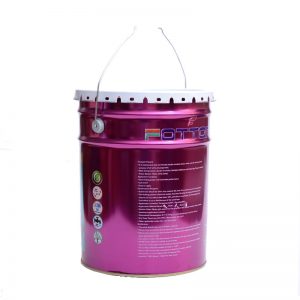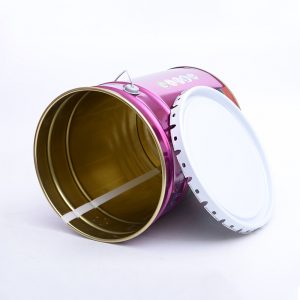The materials of plastic barrels are mostly made of polyethylene, polypropylene, polyester and other plastics by blow molding, injection molding, blister molding, and rotational molding. They are mostly used to contain liquid and solid objects in the chemical, pesticide, pharmaceutical, food, hardware and electronics, electromechanical and other industries. . Specification from 0.25L–220L
Open and close plastic barrels and 1000L container plastic barrels. It can be used for goods storage or transportation turnover. At present, the plastic barrels produced by the rotational molding process have a relatively large capacity of 50 tons.
Some products can be used for hot filling, and the general temperature should not exceed 60°C. After hot filling, wait for the contents to cool down and cool down to room temperature before closing the lid and stacking. Weather resistance above 60℃–40℃ below zero, excellent performance.
The main raw material for the production of plastic barrels is Polyethylene (PE), referred to as PE. It is a high-molecular organic compound formed by addition polymerization of ethylene.
LDPE–low density polyethylene
Low-density polyethylene, or LDPE for short, is the most widely used variety in the plastic packaging and printing industries of various countries. The specific gravity is 0.92~0.93, and it can float on water. Low crystallinity (60%), bulk polymerization is carried out at a pressure of 1000~3000kg/cm2, so it is also called high pressure polyethylene. At 23°C, the density is around 0.92. The calendering formability is poor, and it can be processed into a tubular film by the blow molding method. Suitable for food packaging, fiber product packaging, and daily chemical products packaging. The symbol of degradable plastic bags HDPE-high-density polyethylene
High-density polyethylene, referred to as HDPE. The density is 0.941~0.965g/cubic centimeter. It is polymerized by low pressure, so it is also called low pressure polyethylene. It is milky white, indicating poor gloss. The film can be processed by blow molding method and T die extrusion process. It is heat-resistant and retortable, cold-resistant and freeze-resistant, has good moisture-proof, gas-proof, and insulating properties, and is not easy to be damaged. Its strength is twice that of LDPE. Easy to speak. It has strong paper-like properties and is known as “paper-like plastic film”.
BOPP–Biaxially oriented polypropylene film
Biaxially stretched polypropylene film, also known as biaxially stretched polypropylene film, has the English abbreviation code BOPP, which is characterized by the orientation of stretched molecules, and its mechanical strength, folding strength, air density, and moisture barrier are better than ordinary plastic films. Compared with cellophane per unit area, the unit price is lower than that of cellophane. Due to the good transparency of this kind of film, the reproduced color after printing is extraordinarily bright and beautiful, and it is an important base material for plastic composite flexible packaging.
Product Usage:
Food packaging: packaging for sauce, oil, vinegar, condiments, milk, lactic acid, etc.
Beverage packaging: packaging for wine, sake, fruit wine, mixed wine, fruit juice, mineral water, etc.
Chemical packaging: packaging for fine chemicals, liquid fertilizers, pesticides, treatment agents, cleaning agents, etc.
Medical packaging: packaging for medical reagents, disinfectant, developer, sizing solution, distilled water, etc.
The barrel-making process of plastic barrels
Raw material preparation, blow molding, injection molding, demoulding and trimming, scrap crushing, drying, assembly, final inspection and storage











